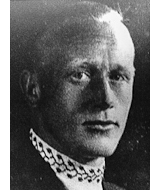Krieger, Daniel
Son of Liza and Isaac. Daniel was born in Russia in October 1908. As a young man, the family moved to Lithuania, where Daniel joined the Zionist youth movement and was trained in the vicinity of the city of Memel with other members, and in 1933 he arrived in Israel on the ship “Washington”. Daniel was sent to Bat Yam in 1934. He was one of the first five workers in the city and fought for the conquest of Hebrew labor alongside his friends. In 1936, with the outbreak of the riots, he enlisted in the Haganah for the Nutras. As part of the defense, he was responsible for Bat Yam’s weapons. Daniel was considered an expert Slisker outside of Bat Yam, and he treated with devotion the illegal weapons of the Yishuv. The job was dangerous because whoever was caught by the British with illegal weapons would have been a dead man, and on the day Daniel worked as a laborer, and at night he made sure to hide the weapons from the eyes of the British. The weapons were carried out with great skill, and acquaintances say that he had gold hands, all of which he did on a voluntary basis and with an unthinkable dedication, and when they finally took the weapons out of hiding in the War of Independence, all the weapons were worthy of use. This is one of Daniel’s great feats, because these weapons protected the city of Bat Yam from the Arabs. (In other parts of the country some of the weapons were eaten by rust). Daniel was a very active partner in the defense of the city of Bat Yam and is considered the hero of the city. Among other things, it would move from position to position to distribute ammunition and food to the fighters. He also rescued wounded and killed the enemy when necessary. In one case, when Yaakov Rosenberg was wounded on Balfour Street, despite the shooting and the danger, Daniel rescued him. He exposed himself to the enemy’s shots and tried to find out where the Arabs were. In another case, Daniel helped build the protective wall on Balfour Street, a wall built under fire. Another case in which Daniel’s bravery was seen was his volunteering for the campaign to liberate Ramle-Lod and then his participation in Latrun in the struggle for Jerusalem. After the War of Independence, he enlisted in the ranks of the police and was one of the first police saboteurs. On January 21, 1950, Daniel was called to rescue wounded persons from a minefield under the Beersheba Bridge, and when Daniel entered the minefield to open a route for the entry of medical forces, he was hit by a mine and seriously wounded. When he thought that his friends were not obeying his instructions, he was wounded and bleeding, drew his gun and said he would shoot anyone who went down to the minefield, and managed to extricate himself from the minefield, but he lost a lot of blood. First Sergeant Daniel fell in the line of duty when he was forty-one and was buried in the Nahalat Yitzhak military cemetery in Tel Aviv, leaving a wife and two daughters. On the 30th day of his death, the Bat Yam city council called a street in his name, Daniel Street, as a token of thanks and appreciation to the man who, at times of difficulty, inspired courage and encouraged his friends and was an example of dedication and heroism in his behavior and actions. Values that Daniel bought, and wrote works about his legacy.
